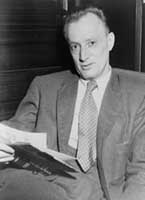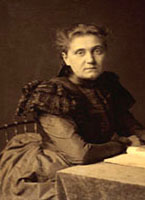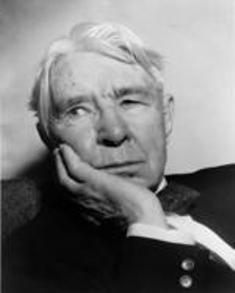
Lorraine Daston
Born: East Lansing, Michigan 1951
Connection to Illinois: Daston was a visiting professor in the Committee on Social Thought at the University of Chicago. Biography: Lorraine Daston is director emerita of the Max Planck Institute for the History of Science (MPIWG) in Berlin, visiting professor in the Committee on Social Thought at the University of Chicago, and a permanent fellow at the Berlin Institute for Advanced Study. Her most recent book is Against Nature.
Awards:
Wikipedia: https://en.wikipedia.org/wiki/Lorraine_Daston
WorldCat: http://www.worldcat.org/search?q=Lorraine++Daston
Selected Titles
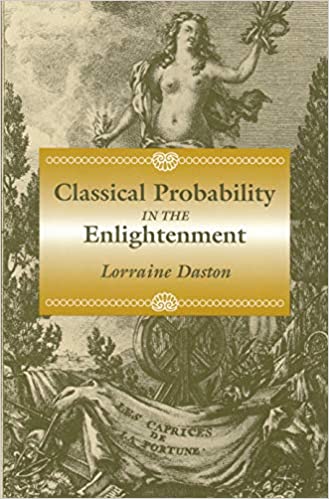 |
Classical Probability in the Enlightenment ISBN: 0691084971 OCLC: 17726921 Princeton University Press 1988 What did it mean to be reasonable in the Age of Reason? Classical probabilists from Jakob Bernouli through Pierre Simon Laplace intended their theory as an answer to this question--as "nothing more at bottom than good sense reduced to a calculus," in Laplace's words. In terms that can be easily grasped by nonmathematicians, Lorraine Daston demonstrates how this view profoundly shaped the internal development of probability theory and defined its applications. |
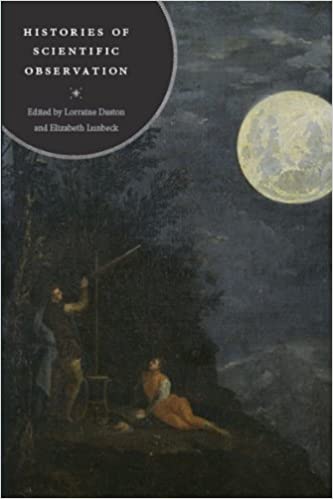 |
Histories of Scientific Observation Illustrated Edition ISBN: 0226136787 OCLC: 701719413 University of Chicago Press 2011 Observation is the most pervasive and fundamental practice of all the modern sciences, both natural and human. Its instruments include not only the naked senses but also tools such as the telescope and microscope, the questionnaire, the photographic plate, the notebook, the glassed-in beehive, and myriad other ingenious inventions designed to make the invisible visible, the evanescent permanent, the abstract concrete. Yet observation has almost never been considered as an object of historical inquiry in itself. This wide-ranging collection offers the first examination of the history of scientific observation in its own right, as both epistemic category and scientific practice. Histories of Scientific Observation features engaging episodes drawn from across the spectrum of the natural and human sciences, ranging from meteorology, medicine, and natural history to economics, astronomy, and psychology. The contributions spotlight how observers have scrutinized everything—from seaweed to X-ray radiation, household budgets to the emotions—with ingenuity, curiosity, and perseverance verging on obsession. This book makes a compelling case for the significance of the long, surprising, and epistemologically significant history of scientific observation, a history full of innovations that have enlarged the possibilities of perception, judgment, and reason. |
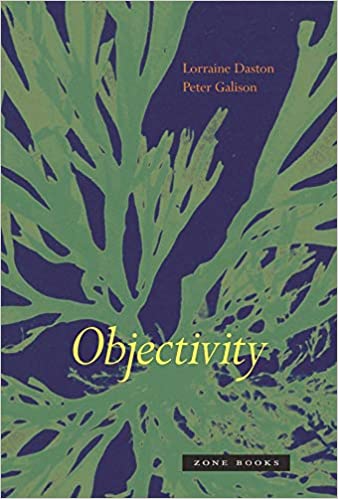 |
Objectivity ISBN: 1890951781 OCLC: Zone Books 2007 Objectivity has a history, and it is full of surprises. In Objectivity, Lorraine Daston and Peter Galison chart the emergence of objectivity in the mid-nineteenth-century sciences ― and show how the concept differs from alternatives, truth-to-nature and trained judgment. This is a story of lofty epistemic ideals fused with workaday practices in the making of scientific images. From the eighteenth through the early twenty-first centuries, the images that reveal the deepest commitments of the empirical sciences ― from anatomy to crystallography ― are those featured in scientific atlases: the compendia that teach practitioners of a discipline what is worth looking at and how to look at it. Atlas images define the working objects of the sciences of the eye: snowflakes, galaxies, skeletons, even elementary particles. Galison and Daston use atlas images to uncover a hidden history of scientific objectivity and its rivals. Whether an atlas maker idealizes an image to capture the essentials in the name of truth-to-nature or refuses to erase even the most incidental detail in the name of objectivity or highlights patterns in the name of trained judgment is a decision enforced by an ethos as well as by an epistemology. As Daston and Galison argue, atlases shape the subjects as well as the objects of science. To pursue objectivity ― or truth-to-nature or trained judgment ― is simultaneously to cultivate a distinctive scientific self-wherein knowing and knower converge. Moreover, the very point at which they visibly converge is in the very act of seeing not as a separate individual but as a member of a particular scientific community. Embedded in the atlas image, therefore, are the traces of consequential choices about knowledge, persona, and collective sight. Objectivity is a book addressed to anyone interested in the elusive and crucial notion of objectivity ― and in what it means to peer into the world scientifically. |
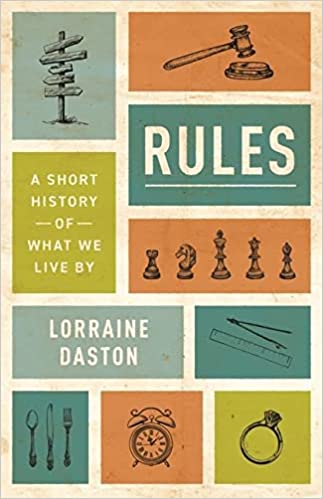 |
Rules: A Short History of What We Live By (The Lawrence Stone Lectures, 23) ISBN: 0691156980 OCLC: 1273673178 Princeton University Press 2022 A panoramic history of rules in the Western world Rules order almost every aspect of our lives. They set our work hours, dictate how we drive and set the table, tell us whether to offer an extended hand or cheek in greeting, and organize the rites of life, from birth through death. We may chafe under the rules we have, and yearn for ones we don’t, yet no culture could do without them. In Rules, historian Lorraine Daston traces their development in the Western tradition and shows how rules have evolved from ancient to modern times. Drawing on a rich trove of examples, including legal treatises, cookbooks, military manuals, traffic regulations, and game handbooks, Daston demonstrates that while the content of rules is dazzlingly diverse, the forms that they take are surprisingly few and long-lived. Daston uncovers three enduring kinds of rules: the algorithms that calculate and measure, the laws that govern, and the models that teach. She vividly illustrates how rules can change―how supple rules stiffen, or vice versa, and how once bothersome regulations become everyday norms. Rules have been devised for almost every imaginable activity and range from meticulous regulations to the laws of nature. Daston probes beneath this variety to investigate when rules work and when they don’t, and why some philosophical problems about rules are as ancient as philosophy itself while others are as modern as calculating machines. Rules offers a wide-angle view on the history of the constraints that guide us―whether we know it or not. |
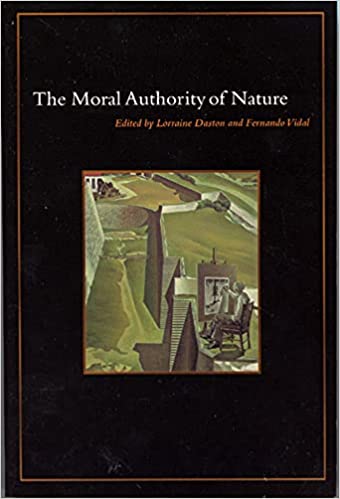 |
The Moral Authority of Nature ISBN: 0226136809 OCLC: 659590164 University of Chicago Press Chicago : 2003 For thousands of years, people have used nature to justify their political, moral, and social judgments. Such appeals to the moral authority of nature are still very much with us today, as heated debates over genetically modified organisms and human cloning testify. The Moral Authority of Nature offers a wide-ranging account of how people have used nature to think about what counts as good, beautiful, just, or valuable. The eighteen essays cover a diverse array of topics, including the connection of cosmic and human orders in ancient Greece, medieval notions of sexual disorder, early modern contexts for categorizing individuals and judging acts as "against nature," race and the origin of humans, ecological economics, and radical feminism. The essays also range widely in time and place, from archaic Greece to early twentieth-century China, medieval Europe to contemporary America. Scholars from a wide variety of fields will welcome The Moral Authority of Nature, which provides the first sustained historical survey of its topic. Contributors: Danielle Allen, Joan Cadden, Lorraine Daston, Fa-ti Fan, Eckhardt Fuchs, Valentin Groebner, Abigail J. Lustig, Gregg Mitman, Michelle Murphy, Katharine Park, Matt Price, Robert N. Proctor, Helmut Puff, Robert J. Richards, Londa Schiebinger, Laura Slatkin, Julia Adeney Thomas, Fernando Vidal |
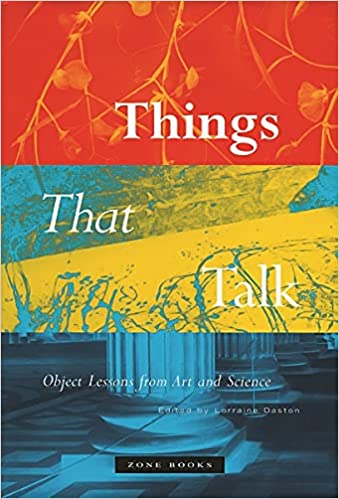 |
Things That Talk: Object Lessons from Art and Science ISBN: 1890951439 OCLC: Zone Books New York : 2004 Imagine a world without things. There would be nothing to describe, explain, remark on, interpret, or complain about. Without things, we would, in short, stop speaking; we would become as mute as objects are alleged to be. In nine original essays, internationally renowned historians of art and of science seek to understand how objects become charged with significance without losing their gritty materiality. Things That Talk aims to escape the opposition between positivist facts and cultural readings that bifurcates the current historiography of both art and science. Confronting this impasse from an interdisciplinary perspective, each author singles out one object for close attention: a Bosch drawing, the freestanding column, a Prussian island, soap bubbles, early photographs, glass flowers, Rorschach blots, newspaper clippings, paintings by Jackson Pollock. Each object is revealed to be a node around which meanings accrete thickly. But not just any meanings: what these things are made of and how they are made shape what they can mean. Neither the pure texts of semiotics nor the brute objects of positivism, these things are saturated with cultural significance. Things become talkative when they fuse matter and meaning; they lapse into speechlessness when their matter and meanings no longer mesh. Each of the nine evocative objects examined in this book had its historical moment, when the match of this thing to that thought seemed irresistible. At such junctures, certain things become objects of fascination, association, and endless consideration. Things That Talk fleetingly realizes the dream of a perfect language, in which words and world merge. Essays by Lorraine Daston, Peter Galison, Anke te Heesen, Caroline A. Jones, Joseph Leo Koerner, Antoine Picon, Simon Schaffer, Joel Snyder, and M. Norton and Elaine M. Wise. |
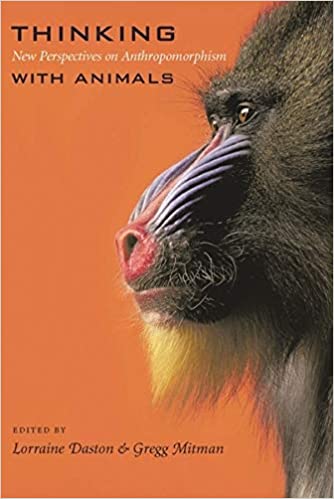 |
Thinking with Animals: New Perspectives on Anthropomorphism ISBN: 0231130384 OCLC: Columbia University Press 2005 Is anthropomorphism a scientific sin? Scientists and animal researchers routinely warn against "animal stories," and contrast rigorous explanations and observation to facile and even fanciful projections about animals. Yet many of us, scientists and researchers included, continue to see animals as humans and humans as animals. As this innovative new collection demonstrates, humans use animals to transcend the confines of self and species; they also enlist them to symbolize, dramatize, and illuminate aspects of humans' experience and fantasy. Humans merge with animals in stories, films, philosophical speculations, and scientific treatises. In their performance with humans on many stages and in different ways, animals move us to think. From Victorian vivisectionists to elephant conservation, from ancient Indian mythology to pet ownership in the contemporary United States, our understanding of both animals and what it means to be human has been shaped by anthropomorphic thinking. The contributors to Thinking with Animals explore the how and why of anthropomorphism, drawing attention to its rich and varied uses. Prominent scholars in the fields of anthropology, ethology, history, and philosophy, as well as filmmakers and photographers, take a closer look at how deeply and broadly ways of imagining animals have transformed humans and animals alike. Essays in the book investigate the changing patterns of anthropomorphism across different time periods and settings, as well as their transformative effects, both figuratively and literally, upon animals, humans, and their interactions. Examining how anthropomorphic thinking "works" in a range of different contexts, contributors reveal the ways in which anthropomorphism turns out to be remarkably useful: it can promote good health and spirits, enlist support in political causes, sell products across boundaries of culture of and nationality, crystallize and strengthen social values, and hold up a philosophical mirror to the human predicament. |
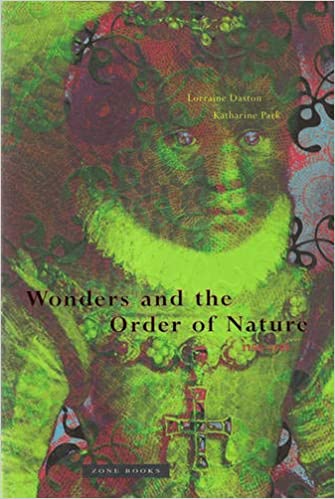 |
Wonders and the Order of Nature, 1150-1750 ISBN: 0942299906 OCLC: 35961443 Zone Books New York : 1998 A rich exploration of how European naturalists used wonder and wonders (oddities and marvels) to envision and explain the natural world. Winner of the History of Science Society's Pfizer Prize"This book is about setting the limits of the natural and the limits of the known, wonders and wonder, from the High Middle Ages through the Enlightenment. A history of wonders as objects of natural inquiry is simultaneously an intellectual history of the orders of nature. A history of wonder as a passion of natural inquiry is simultaneously a history of the evolving collective sensibility of naturalists. Pursued in tandem, these interwoven histories show how the two sides of knowledge, objective order and subjective sensibility, were obverse and reverse of the same coin rather than opposed to one another."―From the Introduction Wonders and the Order of Nature, 1150–1750 is about the ways in which European naturalists from the High Middle Ages through the Enlightenment used wonder and wonders, the passion and its objects, to envision themselves and the natural world. Monsters, gems that shone in the dark, petrifying springs, celestial apparitions―these were the marvels that adorned romances, puzzled philosophers, lured collectors, and frightened the devout. Drawing on the histories of art, science, philosophy, and literature, Lorraine Daston and Katharine Park explore and explain how wonder and wonders fortified princely power, rewove the texture of scientific experience, and shaped the sensibility of intellectuals. This is a history of the passions of inquiry, of how wonder sometimes inflamed, sometimes dampened curiosity about nature's best-kept secrets. Refracted through the prism of wonders, the order of nature splinters into a spectrum of orders, a tour of possible worlds. |


